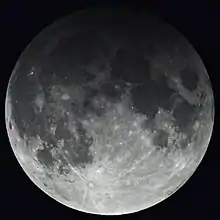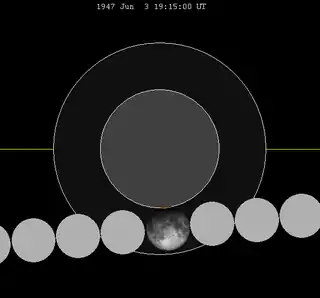
A partial lunar eclipse took place on Tuesday, June 3, 1947. A tiny bite out of the Moon may have been visible at maximum, though just 2.02% of the Moon was shadowed in a partial eclipse which lasted for 34 minutes and 42 seconds. A shading across the moon from the Earth's penumbral shadow should have been visible at maximum eclipse.
Visibility
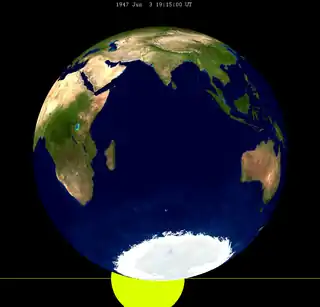
Related lunar eclipses
Lunar year series
| Descending node | Ascending node | |||||
|---|---|---|---|---|---|---|
| Saros | Date Viewing |
Type Chart |
Saros | Date Viewing |
Type Chart | |
| 109 | 1944 Jul 06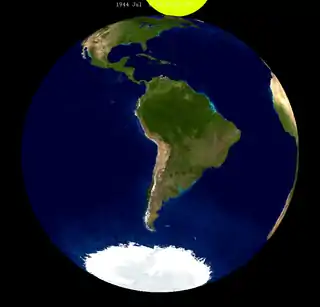 |
Penumbral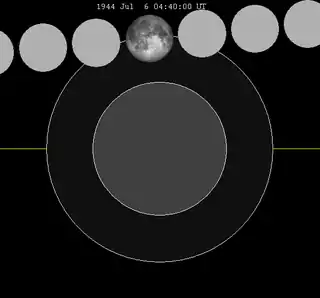 |
114 | 1944 Dec 29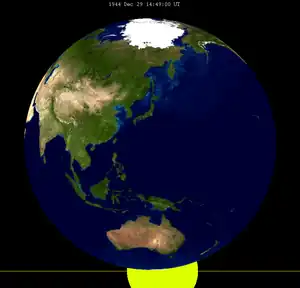 |
Penumbral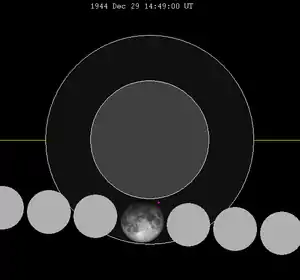 | |
| 119 | 1945 Jun 25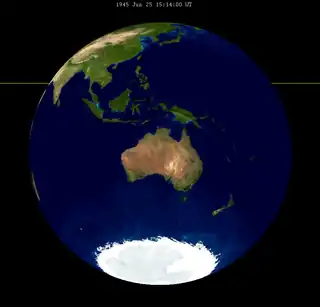 |
Partial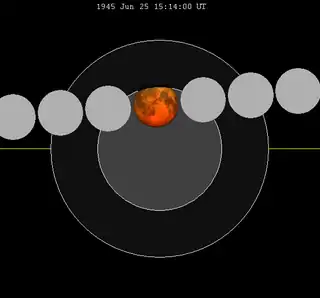 |
124 | 1945 Dec 19 |
Total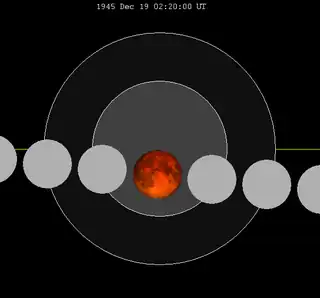 | |
| 129 | 1946 Jun 14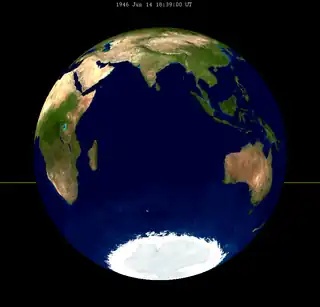 |
Total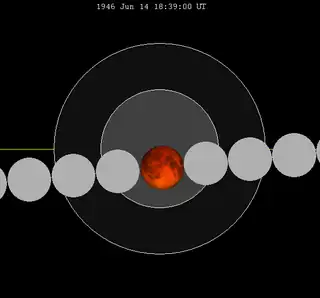 |
134 | 1946 Dec 08 |
Total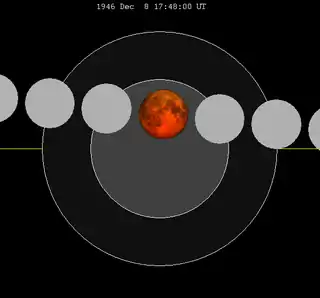 | |
| 139 | 1947 Jun 03 |
Partial |
144 | 1947 Nov 28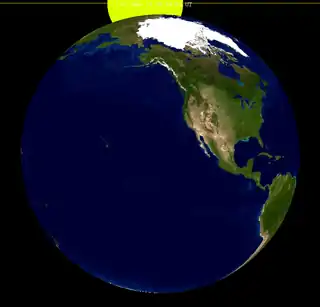 |
Penumbral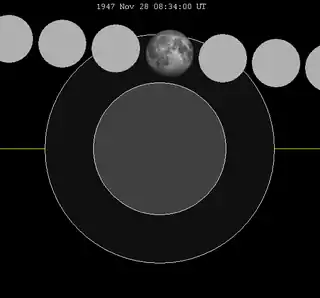 | |
Saros cycle
Lunar Saros series 139, repeating every 18 years and 11 days, has a total of 79 lunar eclipse events including 42 umbral lunar eclipses (15 partial lunar eclipses and 27 total lunar eclipses)..
| Greatest | First | |||
|---|---|---|---|---|
The greatest eclipse of the series will occur on 2199 Nov 02, lasting 102 minutes.[1] |
Penumbral | Partial | Total | Central |
| 1658 Dec 09 | 1947 Jun 03 | 2073 Aug 17 | 2109 Sep 09 | |
| Last | ||||
| Central | Total | Partial | Penumbral | |
| 2488 Apr 26 | 2542 May 30 | 2686 Aug 25 | 3065 Apr 13 | |
| 1911 May 13 | 1929 May 23 | 1947 Jun 03 | |||
 |
 |
 |
 |
 |
 |
| 1965 Jun 14 | 1983 Jun 25 | 2001 Jul 05 | |||
 |
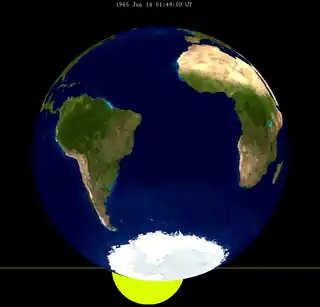 |
 |
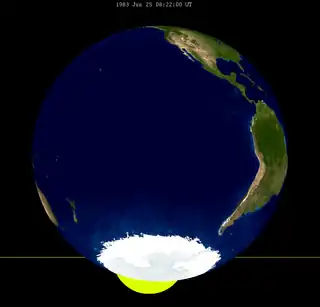 |
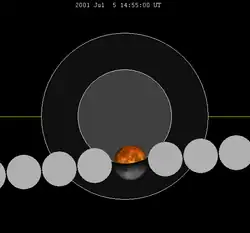 |
 |
| 2019 Jul 16 | 2037 Jul 27 | 2055 Aug 07 | |||
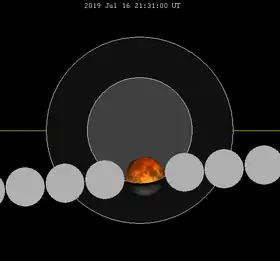 |
 |
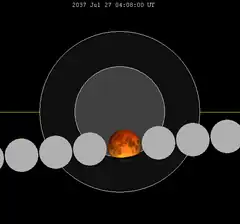 |
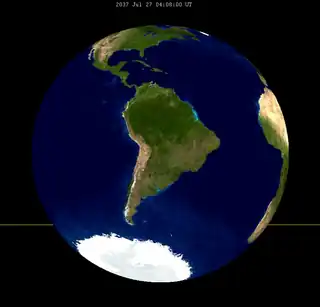 |
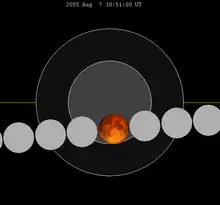 |
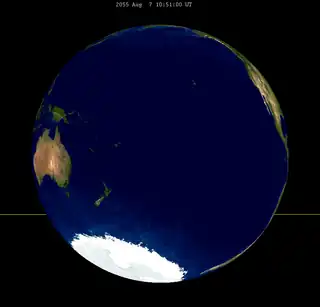 |
| 2073 Aug 17 | 2091 Aug 29 | ||||
Tritos series
- Preceded: Lunar eclipse of July 4, 1936
- Followed: Lunar eclipse of May 3, 1958
Tzolkinex
- Preceded: Lunar eclipse of April 22, 1940
- Followed: Lunar eclipse of July 16, 1954
See also
Notes
External links
- 1947 Jun 03 chart Eclipse Predictions by Fred Espenak, NASA/GSFC
This article is issued from Wikipedia. The text is licensed under Creative Commons - Attribution - Sharealike. Additional terms may apply for the media files.

_(cropped).jpg.webp)
